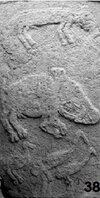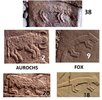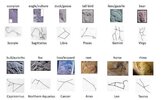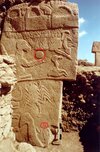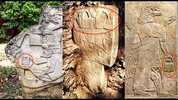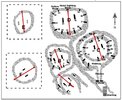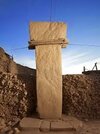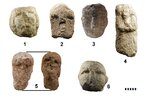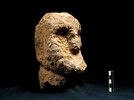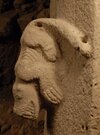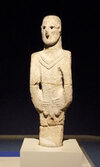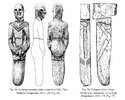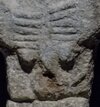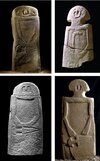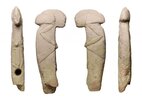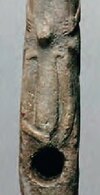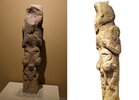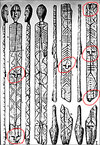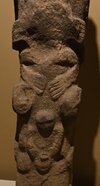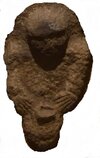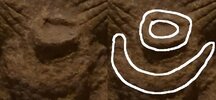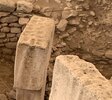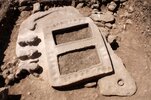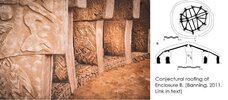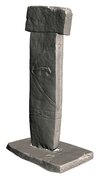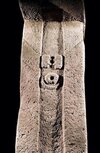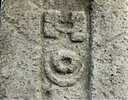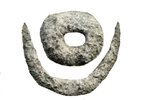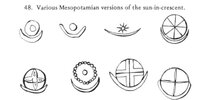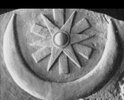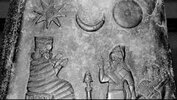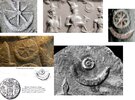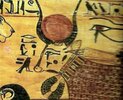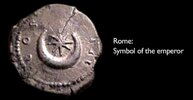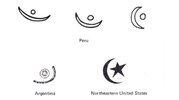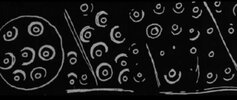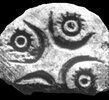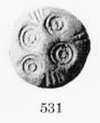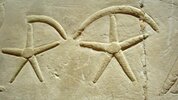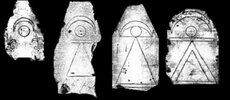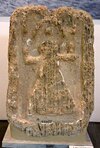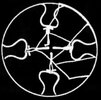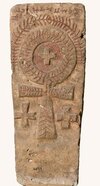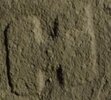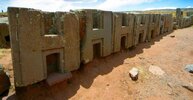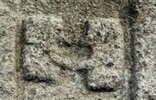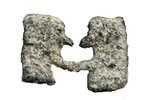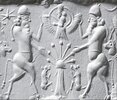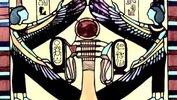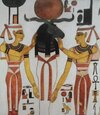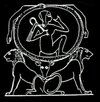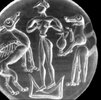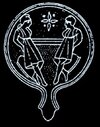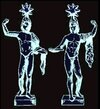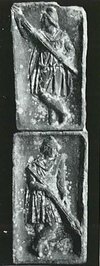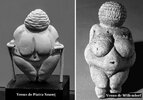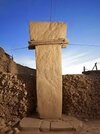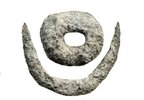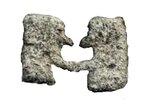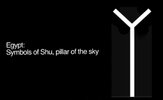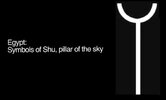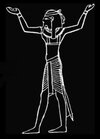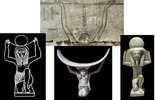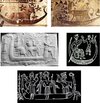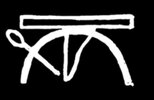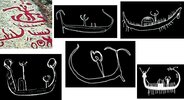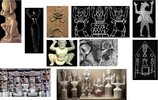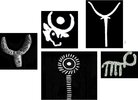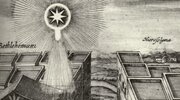SECTION 1 – SWEATMAN & GÖBEKLI TEPE
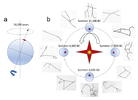
Martin Sweatman, an engineer from Edinburgh University with a specialist research field of statistical mechanics, has caused a storm to brew up between the hoary world of archaeology and the still youthful discipline of archaeoastronomy. In a series of peer reviewed papers as well as a celebrated book,
PreHistory Decoded, Sweatman has repeatedly declared his case as proven, namely that engravings on some of the T-pillars at Göbekli Tepe represent a complete constellational map of the zodiac and critically, with regard to Pillar 43 (the so called Vulture Stone), depict specific solstice and equinox constellations, (as well as knowledge of precession), all combining to form a “date-stamp” for the summer solstice of 10,950 ± 250 BC and thereby serving as a near precise commemoration of the comet impact event associated with the Younger Dryas. All most enticing as a possibility.
For anyone unfamiliar with his work, it is covered to some degree on the following thread:
Prehistoric Astronomy and the Younger Dryas Catastrophe?
From the outset I was certainly open to Sweatman’s proposition because I’m not only in tune with the increasing evidence concerning the cometary nature of the YD event (and the ensuing repeat visits by the ‘gods’ down through the ages), but also because my own research – fundamentally shaped by the knowledge found on this forum and in particular the essential insights provided by Laura – points to a deduction that over the millennia the stars (heavens) represented a canvas of memory by which certain understandings of both the cosmos and reality itself was maintained, competed over, transferred and utilised, forming a long-term inspirational driving force behind the development of religion worldwide and even vital aspects of civilisation itself, with comets and asterisms being very much at the heart of the matter.
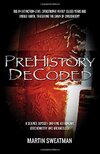
That is why I had such high expectations when I began to read my own copy of
PreHistory Decoded. However, at the time these hopes were to be sorely disappointed, for though I appreciated the scope of the book, no amount of wishful thinking on my part could persuade me as to his central argument that an identification of the constellations of the zodiac - which he determines as being evidentially and scientifically present in representations at Göbekli Tepe - was in fact a valid conclusion.
Over the intervening years I thought little more on the matter. I suspect this was partly because I was aware that his work has been generally well received here with his blog articles being regularly posted to SOTT of late, and so it perturbed me somewhat that I might be at odds with this concord. In other words, I must be missing something, or so I assumed. Therefore, as part of my current deep dive I decided to revisit my initial response by painstakingly re-reading
PreHistory Decoded along with his more recent online writings to see if my initial response was merely a blind spot of the time and that a more measured digest might get me to change my mind. I would like to say that is what I discovered but unfortunately, no. Whilst still valuing his broad and perceptive synthesis of a wide range of sources to provide an alternative perspective on the ancient past that is broadly speaking in line with the research of this forum, as soon as he moved into his own specific theory, methodologies and conclusions, the roof fell in once more and I found myself back to the same visceral level of disagreement I experienced upon my first reading.
I can’t quite decide if I think he’s an opportunistic if sophisticated mountebank who knows full well his theory is BS but doesn’t care about the discord it spreads just so long as he can hold and keep the limelight, or if he’s actually a very sincere man who’s crucially so out of his depth where it most counts, and being blinded by his narrow view of ‘science’ and its irrefutable support for his case, ploughs on regardless as to the historical divides he is once again exacerbating. He is increasingly swaying minds towards his one-size fits all theory (whilst alienating many others) which he extrapolates back to the Palaeolithic to include just about all its significant symbolic imagery under the spell of his statistical analysis. He is also at risk of giving good reason to push catastrophism back to the time when it was easy to dismiss as a pseudo theory, and this is perhaps the most pressing reason to give his theory a thorough cross-examination.
I am not alone in holding these concerns. In the period since his theories first entered the public domain, a number of voices, principally from the field of archaeology, have come forward to seriously question his central hypothesis. Nothing seemingly dents his self-confidence however, and of late he has become regrettably ever more dogmatic, condescendingly dismissing all critiques with the repeatedly aloof claims that archaeologists are themselves blinkered gatekeepers (true in part but perhaps projection), that his statistical model is irrefutable scientific proof, that his adversaries are incapable of understanding the scientific method, (seemingly he alone does, like some divinely anointed high priest), and that therefore his hypothesis is irrefutable come what may. I admit to being no expert on statistical theory but upon first reading his book even I sensed we are witnessing essentially the same kind of problem faced whenever modelling is designed to serve a predetermined outcome – namely, garbage in-garbage out. Whether it is climate change or COVID modelling, we see the same sleight of hand and psychological manipulation of data via the apparent power of models and their ability to provide the required statistical proof. And to my mind, be it consciously or unconsciously, Sweatman is looking like just another left-brain champion of this misleading approach.
Critics better equipped in their field than I have done an excellent job in dismantling the biases and contradictions underpinning his central theory. In particular, I will link (see below) to PHD archaeologist Rebecca Bradley’s point by point rebuttals emerging from barbed online exchanges with Sweatman (and as some of her principle criticisms coincide with my own, I will summarize certain key takeaways also below). But first of all let me outline the key issue at stake that for me dismantles Sweatman’s theory before it even leaves the starting block, namely his flawed understanding of the origins of constellations, their likely identification and the difficulty in inferring one culture’s asterisms from another’s, especially over 10,000 plus years of complex history. This is no small matter, for above all else, the assumptions he makes at this primary stage shapes and determines every other aspect of his theory, including his statistical model, and without which the whole thing would collapse like a pack of cards.
In every case, and by making like for like comparison, Sweatman correlates directly back from the Greco-Roman system we are all familiar with to his postulated zodiac constellation symbols dating from circa 10,900BCE. Without the viability of this methodology, everything else that follows evaporates in a puff of smoke. It is my proposition that such a definitive interpretation is structurally untenable. Let us first hear why from the man himself.
In a long online post made by way of an attempt to refute Bradley’s detailed concerns, he states the following:
Now, of course, the difficulty we have is in identifying unambiguously an animal symbol with a constellation. This is where our ranking table comes in. In this table we rank the animal symbols against each constellation
Of course, there is some subjectivity here, as this pattern matching game is not so clear. Nevertheless, our view of the pattern matches would have to be completely wrong to render our statistical estimate meaningless.
In a nutshell, here you have my serious issue with his core methodology.
Now, of course, the difficulty we have is in identifying unambiguously an animal symbol with a constellation … Of course, there is some subjectivity here, as this pattern matching game is not so clear. Nevertheless, our view of the pattern matches would have to be completely wrong to render our statistical estimate meaningless.
I suggest they are indeed completely wrong and therefore meaningless for a number of good reasons.
When he speaks of ‘pattern matching’, (or pareidolia), essentially Sweatman falls into the oft repeated trap of someone who hasn’t spent nearly enough time studying and contemplating – and therefore most importantly,
respecting - asterisms culture by culture, as well as their associated symbols, lores and myths, and thereby grasping the most fundamental issue of all – that specific areas of the sky were
not chosen to become distinct constellations because they brought to mind and looked like this known animal or that imaginary figure (pattern matching) but rather a pertinent symbol was
first generated in the mind’s eye (and/or from direct
providential experience!) before
then being superimposed on a distinctly meaningful area of the sky and thereby ‘made to fit’ alongside other meaningful symbols in their proximity - because
that is where it belonged to fulfil a deeper purpose.
This is so obvious yet so foundational it beggars belief that someone like Sweatman still repeats the childish fallacy that if a certain group of stars happened to appear to form the shape of a bear or a bird or whatever, seeing as that’s what the ancients saw, they therefore arbitrarily imposed this or that image / idea here and there in the sky and
for that reason alone. The most obvious support for this untruth is that out of the 88 systems known to us today, there is barely a handful of constellations that objectively
even so much as suggest recognisable connection in shape and form to the symbolic figure that represents them. If you actually look up at the heavens as the ancients did, (not at photo-shopped images with outlines clearly given and patterns amplified), be it Aries the ram or Pisces the fishes, no amount of squinting will generate a eureka moment and make them identifiably fit their signature image
if you didn’t first already know that’s what they have been determined to represent. Furthermore, even those constellations that can be argued to fit their image in some manner or other – such as perhaps Taurus the Bull or The Great Bear - have a history of either at one time or another being formed completely the other way round (Taurus) or seen to represent an entirely different though still semiotically consistent object (e.g. The Great Bear/The Wagon).
No, I’m sorry, these heavenly signs were not created by inebriated hunters, idle herdsmen or naïve farmers lying back of a night with nothing better to do than play eye-spy with patterns in the sky, but rather were the product of purposefully driven shamans/tribal elders/astronomer-priests/high initiates/philosophy schools and even secret societies with both exoteric and esoteric intent in mind. The highly symbolic patterns grew from accumulated understanding of the actions (seen and unseen) and meaning (revealed and veiled) of the cosmos of the ‘gods’ and how human life is but a perpetual reflection of our interaction with a divinely alive realm and that this knowledge was to be remembered, honoured (and feared!) most reverentially in the sky. It was a deeply portentous memory system and possibly an initiatory teaching device from the get go, not some repository for the vagaries of idle daydreams and childlike zoology! Yet Sweatman seemingly has no idea of this foundational purpose and is perfectly content to accept on face value the contradictory antithesis of juvenile thinkers and world-class astronomers!
There are even more root problems for him to overcome that he never even touches upon. For example, to possess any contextual meaning individual groupings of symbolic stars (i.e. constellations) should implicitly be sourced from a more fully realised body of constellations and associated relationships (i.e. some form of primer circular zodiac or cohesive parent system). This is how we today are able to recognise and give meaning to individual designs and groupings of constellations as derived from the Greco-Roman zodiac – because of their implied innate relationship and place within the source map as a whole. We take this for granted without even thinking about it – and I suspect that is what Sweatman has done as well. There is zero surviving physical evidence, however, for such a Rosetta stone – a form of standardised mapping of the imagined sky either pictorially or textually realised – prior to approximately 1000 BC. Yes, there is good evidence for the existence of constellations prior to this date, (perhaps millennia before), and I do have good reason to think there was indeed a series of stages of integrated and alternative constellational forms in use well before the zodiac itself finally began to take shape in Babylonia and then finally classical Greece. However, considering the fact that after 3,000 plus years of Egyptian history, the Dendera star map, (ca. 50 BCE), is the
earliest surviving relief depiction we have anywhere containing a version of the zodiac as a whole, how can Sweatman so blithely source his chosen ancient constellations directly from the zodiac’s current assembly whilst ignoring the problematic fact that no such fully realised star map (in whatever form ‘fully realised’ meant to people of that time) has thus far been uncovered prior to this date of 50 BC?
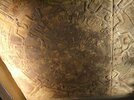
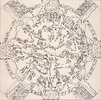
When looking at the 12-13,000-year-old images at Göbekli Tepe it therefore begs the question that if the carvings represent individual zodiacal constellations, (having at some critical juncture been shifted from oral to pictorial representation), where is the source from which they were taken? If there was one, it is of course possible that it was long held in a collective memory and only taught orally with the sky as its textbook, but we are aligning the goal posts to fit a predetermined theory and no such assumption can be made without actual evidence to support it. Anyway, at some point in time, surely that system would have been committed to rock or some such surface before being further translated to clay and then marble and eventually on to papyrus or whatever? Yet we have nothing the like of this in the 9,000 years or so between Göbekli Tepe and MUL.APIN in circa 1,000BCE. For Sweatman’s theory to be correct regarding the zodiac in particular, we have to accept on his say-so alone at least nine millennia’s worth of a blank page. Until such time as this missing Rosetta Stone from this or that period in between is uncovered, the question remains entirely moot that any zodiac existed at all prior to comparatively late antiquity, not withstanding the question of purposeful commemoration. For
if the builders of Göbekli Tepe were so keen that what they carved would be handed down and interpreted in the future, why would they not also have sculpted the necessary source code (their original complete version of the ‘zodiac’) on site as they of all people apparently knew how easy it was for the past to be washed away?
Thus, to infer back from current to postulated extremely ancient constellations seeking like-for-like correlation and recognition is fraught with the high chance of significant error at the root level. Furthermore, locations in the sky, boundaries, orientation, iconography, etc. have all changed repeatedly, sometimes unrecognisably, even in the known period between 1,000BC and the Common Era. Literally dozens, perhaps hundreds of constellations have likely come and gone down through the millennia to be replaced by others with often quite different boundaries, shapes and totems. Still others have been chopped up, reconfigured and even moved. Further, extrapolating the sky we see today back to the vista of circa 10,900 BCE is standard uniformitarianism and is by itself a fundamental error of assumption. We now know that stars can ‘switch off’ and vanish literally without warning whilst others can suddenly appear. More importantly, other significant objects may well have inhabited – even dominated – the sky at different stages, making distant twinkles in the far heavens irrelevant to the people of the time. Whilst these are not widely held views, it is not beyond the bounds of reason especially when one understands the documented importance of cometary comings and goings, plasma formations and other cosmic electrical events. Sweatman makes no reference to the EU theory or, for example, to the pioneering work of respected plasma physicist Anthony Peratt, and one therefore suspects he has not factored into his thinking the possibility that the patterns he sees on the T-pillars at Göbekli Tepe could well have an entirely different source to the current constellations in our night sky (a great deal more on this vital issue anon).





